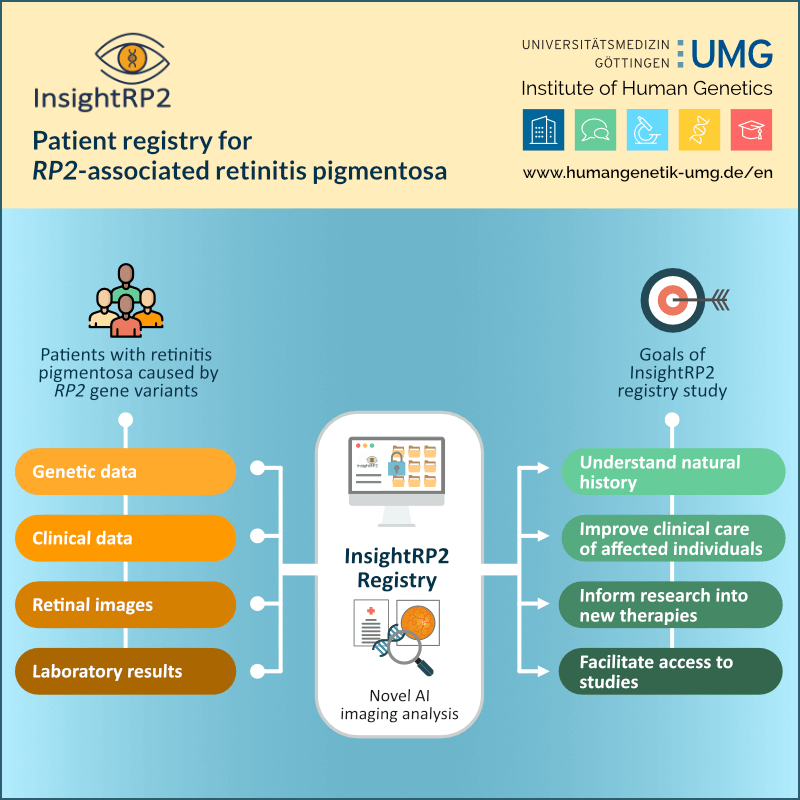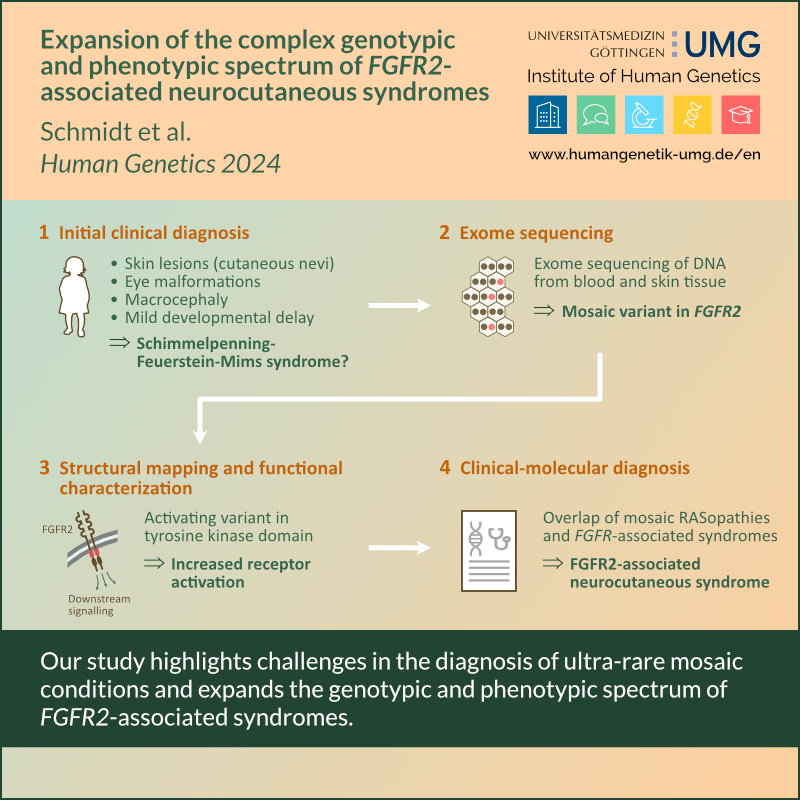InsightRP2: First global patient registry for RP2-associated retinitis pigmentosa starts at UMG

Mutations in the RP2 gene cause a specific form of retinitis pigmentosa, a group of inherited retinal disorders. The InsightRP2 registry helps clinicians and researchers better understand the genetic basis and progression of RP2-associated retinitis pigmentosa. Additionally, they can focus their research and the development of future treatment approaches on enhancing the quality of life for patients.
The registry is organized by the Institute of Human Genetics at the University Medical Center Göttingen.
InsightRP2 registry is open to all patients with a confirmed diagnosis of retinitis pigmentosa associated with a causative RP2 gene variant.
To participate, please use one of the following links to the UMG registration site, depending on the patient’s age: adults, adolescents, children
Contact:
Study leaders at the Institute of Human Genetics:
Dr. med. Nina Bögershausen: nina.boegershausen@med.uni-goettingen.de
Prof. Dr. med. Bernd Wollnik: bernd.wollnik@med.uni-goettingen.de


